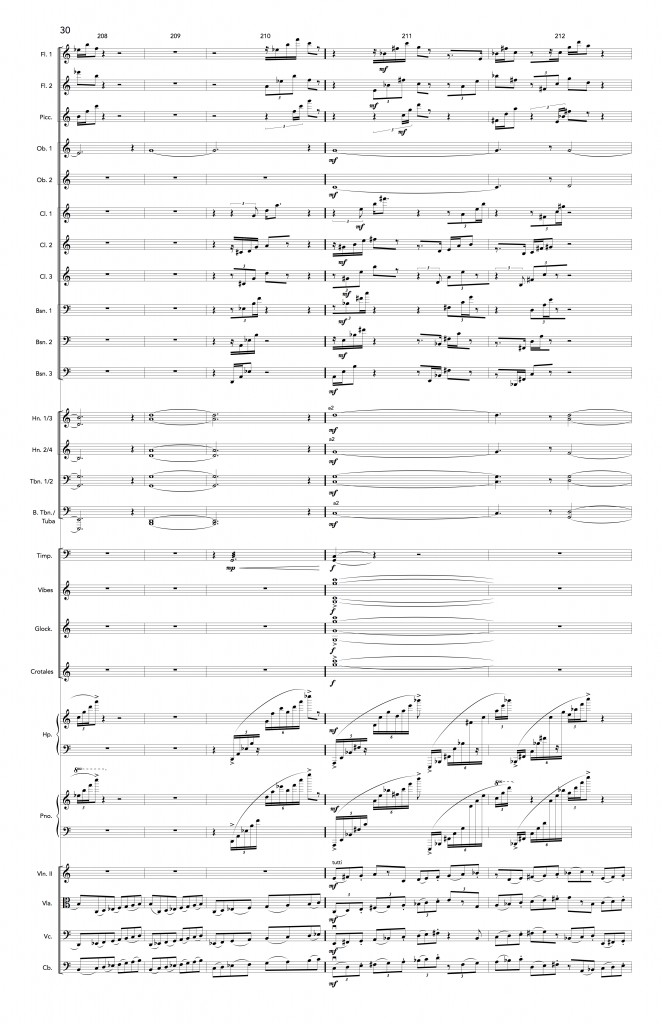“…and burn like a flame of the sun”
For the final section of “O Nobilissima,” I am experimenting with an idea that is at once very old and somewhat new. In the Renaissance era in particular, composers were drawn to compositional techniques that lead to shifting perceptions of time. In a cantus firmus mass movement, for example, a section of chant will often appear in the tenor voice, moving very slowly, while the voices above and below move more quickly. Even more systematic is the mensuration canon, where multiple versions of the same tune are presented simultaneously and at different speeds. In my piece, I have a similar idea—we will hear a seven-chord chorale played three times by the brass, the second and third iterations being significantly slower and grander than the first. Simultaneously, the strings and woodwinds will increase their activity, building to a large climax in the final measures of the piece. I think of this as an aural image of a blazing sun—it burns incessantly, yet it is slowly changing (dying); it has bursts of sudden energy, while also maintaining a sense of stasis.
For the final seconds of the piece, I am borrowing another general idea abstracted from Dvorak’s “New World” Symphony. Most large orchestral works from the 19th century end with either a single hit from the orchestra or a sustained chord. Dvorak does both—the orchestra hits the final chord in a short burst, while the woodwinds sustain just a few seconds longer, like the burning embers of a fire. In my work, the final chord (D and A, no third) will sound fortissimo, followed by pianissimo tremolos in the upper strings and a cascade of harp harmonics.
As is often the case for me, when I reach the end of a piece, I do less sketching and more fully-realized composition; rather than post my minimal sketches for this section, I’ll share something that looks close to the finished product. Below are two pages from the fully-notated score, showing the beginning of this final section. Visually, you can see ripples of woodwinds at the top of the page, long notes in the brass in the middle, waves of notes in the piano and harp below that, and a steady stream of eighth-note scales in the strings at the bottom of the page.



Varvara
July 20, 2015 at 6:19 am //
A woodland in full color is awesome as a forest fire, in magnitude at least, but a single tree is like a dancing tongue of flame to warm the heart.